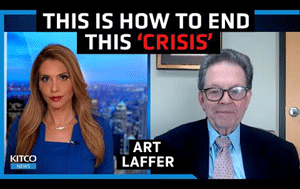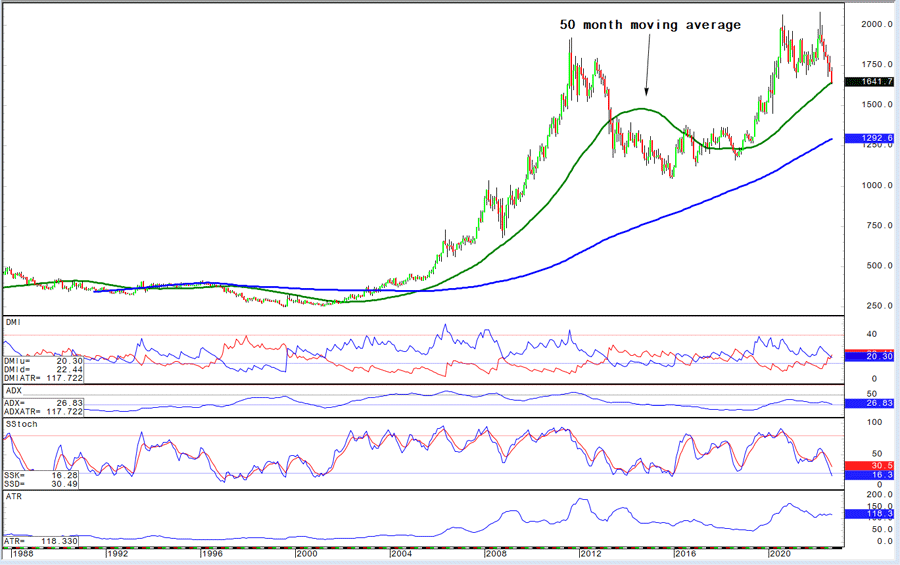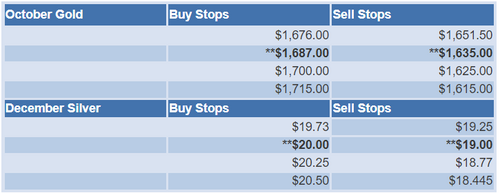
Challenging The Crypto Winter’s Devastating Effects. Safeguard Your Portfolio and Hang In There

Bitcoin and Ethereum prices are down more than 50% this year as inflation and rising interest rates prompt investors to seek safe-haven assets. CNBC confirms that cryptocurrencies have lost more than $2 trillion since their 2021 highs, and not everyone thinks the bear market will end anytime soon. In 2017, the crypto industry witnessed exponential growth. Many crypto enthusiasts saw it as a way to save money and make transactions more secure.
However, some investors were skeptical of the space when prices were skyrocketing. They believed prices would continue to rise and that many people would profit from cryptocurrency investments. Nonetheless, there were still areas of great concern about the asset. Many have struggled with crypto losses in recent months. Is the crypto winter here to stay?
Many investors became cautious when the crypto market began to decline earlier this year. Prices had dropped considerably from their all-time highs. Some people even believed the market was crashing, leading to mass sell-offs. This led to a massive reduction in the overall cryptocurrency market cap. Although the market has shown signs of recovery, prices are still lower than at the beginning of the year.
As many investors lost faith in cryptocurrencies, many companies suffered as well. Many businesses stopped accepting crypto as payment for goods and services. This left many companies unable to pay their bills and operate normally. Some small businesses even went bankrupt due to a lack of bill payments. Additionally, government agencies began reducing their services for crypto businesses; some even stopped accepting applications from local businesses. All those working in the crypto space saw a drastic drop in their income after January prices.
Fortunately, many people have turned to cryptocurrencies to save money. Typical banks give meager amounts of interest on savings accounts. However, several banks now offer accounts with 0% monthly fees. Some people have even turned to cryptocurrency as an alternative form of investment. Although the market is far from optimal, it's working for those in need of protection against loss of income.
The crypto winter is still prevalent worldwide. Prices remain lower than they were at the start of this year. Several companies have cut jobs and services due to decreased revenue. Chances are that things may become much more alarming than they are already.
What Caused the Crash?
The cryptocurrency market crash began earlier this year as rampant inflation prompted the Federal Reserve to raise interest rates and cool the economy. Despite being a hedge against inflation, cryptocurrencies are more closely correlated with tech stocks than gold prices. The rapid decline of the tech industry has accelerated the collapse of cryptocurrencies.
Algorithmic stablecoins are the next victim. Its sister coin, Luna, fell to zero as investors began dumping TerraUSD (UST), the stablecoin shedding the dollar. While Terra-based Defi protocols like Anchor and Astroport died instantly, leveraged hedge funds holding Luna were the most prominent victims.
For example, Three Arrows Capital (3AC) lost $600 million in the UST/Luna collapse. The hedge fund also had a $1.2 billion highly leveraged position in the Grayscale Bitcoin Trust, the value of which fell to $550 million. Unsurprisingly, it defaulted on Voyager Digital's $650 million loan and went bankrupt.
The bankruptcy of 3AC had a domino effect on the entire industry. The hedge fund's creditor list brought not only Voyager Digital out of business but also Genesis Trading, CoinList, DeFiance Capital, and FalconX. The companies are still solvent, but massive losses could force them to scale back their growth plans and ambitions.
The collapse of UST and the bankruptcy of 3AC caused many investors to withdraw their funds from the crypto ecosystem. Unfortunately, many Defi protocols rely on two-way liquidity to function and run into problems. Celsius' stETH, in particular, started trading at a discount, making it difficult for the group to raise funds for redemption.
Meanwhile, several high-profile hacks have accelerated those losses and dented consumer confidence. Crypto startup Nomad, for example, lost about $200 million and did not disclose whether customers would receive refunds if funds were not recovered. The robbery comes just a month after Harmon Horizon lost about $100 million to a similar bridge attack.
Potential Long-term Effects
What does crypto winter mean for mainstream crypto adoption? Will this accelerate or impede the efforts of the industry players to make digital assets a standard payment method? The industry has beheld new ways for consumers to pay with cryptocurrencies instead of fiat, suggesting the answer may be uncertain.
The crypto winter has led to a crisis of confidence among retail and institutional investors. For example, Coinbase saw a sharp drop in trading volume and had to cut 18% of its workforce to cut costs. At the same time, many crypto miners are experiencing profitability problems due to the low prices of many tokens.
The good news is that FTX's Sam Bankman-Fried has become a JPMorgan-like figure, bailing out cryptocurrency projects and helping the market stabilize in the short term. For example, he provided a $250 million loan to bail out crypto lender BlockFi and a $200 million line of credit to Voyager Digital through his Alameda research.
The bad news is that the crash negatively affected many people. For example, Morgan Stanley predicts that VC funding for cryptocurrency companies could drop by 50% due to the poor macroeconomic outlook and the crypto winter. A lack of new funding could force many unprofitable projects to scale back or shut down entirely.
Investors may also have lesser interest in crypto assets. Unsurprisingly, retail interest in crypto assets has fallen with prices, and it may take some time to recover. As a result, demand for cryptocurrency exchange-traded funds and other financial assets is likely to decline, while the diversification advantages of the asset class are questioned.
Finally, the crypto industry may also have to deal with structural changes. For example, algorithmic stablecoins may need to reconsider whether they need tangible reserves to back their value. Meanwhile, regulators may use the crypto winter to regulate banking-like decentralized finance (Defi) applications or monetary-like stablecoins.

Safeguard Your Portfolio
Crypto traders and investors have a variety of ways to hedge their portfolios through the crypto winter. While some have exited the market entirely, there is always a chance that they will miss out on an excellent opportunity to re-enter the market. Finally, a lot of market timing research shows that investors tend to sell after a dip and miss out on buying at the bottom.
Some strategies and best practices to consider are:
Dollar-Cost Averaging – Over time, investors may want to continue to buy small amounts of cryptocurrencies, thereby reducing their cost base when the price of cryptocurrencies falls. In the case of a recovery, they can make more profits.
Tax-Loss Harvesting – Investors can sell losing positions to realize the current tax period loss, offsetting their ordinary income and capital gains. Since cryptocurrencies are not subject to wash sale rules, investors can quickly buy back and maintain their asset allocation.
Diversification – Investors should consider holding a more comprehensive range of assets rather than a few risky projects to reduce the risk of a single project disrupting their entire portfolio.
Please note before implementing these strategies, it is best to consult with your financial and tax advisor to discuss how they may affect your overall portfolio. For example, the timing of certain sales may affect your marginal tax rate, or diversification into certain crypto assets may change the risk level of your overall portfolio.
The Bottom Line
The crypto winter has been emotionally and practically challenging for fans of cryptocurrencies. However, lower prices may help cryptos reach new users and create legal channels for investors to interact with projects appropriately. Thus, enthusiasts should be patient as regulators and consumers generally adopt cryptocurrency use.
Prominent cryptocurrencies have all traded sharply lower since the beginning of the year. As a result, retail investors have scaled back their trading activity, miners struggled to make a profit, and institutional investors were reluctant to back up new projects or add crypto assets to their portfolios.
The current crypto winter won’t end the industry, given its explicit goal to become a new monetary system and a much-needed one. With the macroeconomic factors at play, it may take a while for the market to recover and rebuild confidence. Therefore, some cryptocurrencies and projects may offer discounts on their current valuations. Ideally, search out transparent crypto projects with a purpose and utility behind them.
Crypto experts have repeatedly stated that crypto winters are good for Bitcoin. The who’s who of the industry express that bear markets are actually healthy for the crypto industry, as it removes speculators and scams while providing space to build real products and services that assist in creating a sustainable global economy.
So, all these factors are contributing to a more robust, healthier cryptocurrency industry where genuine projects and communities will flourish. Therefore, all investors, particularly retail and those new to the industry, should look at the bigger picture and understand why crypto is poised to liberate us from a failing traditional financial system. Companies are working hard to make this a reality, and a Parallel Economy is starting to take shape that will eventually become mainstream by the Grace of God.

Tim Moseley








 'Long, dark period ahead of us' as Putin escalates in Ukraine and the Fed hikes another 75 bps – Art Laffer
'Long, dark period ahead of us' as Putin escalates in Ukraine and the Fed hikes another 75 bps – Art Laffer
.gif)

.gif)






 Gold sees new safe haven allure as Putin threatens to use all instruments to defend its territory
Gold sees new safe haven allure as Putin threatens to use all instruments to defend its territory
.gif)

 Russia's new gold exchange could challenge LBMA and reveal gold's 'fair' price – Matthew Piepenburg
Russia's new gold exchange could challenge LBMA and reveal gold's 'fair' price – Matthew Piepenburg
.gif)





